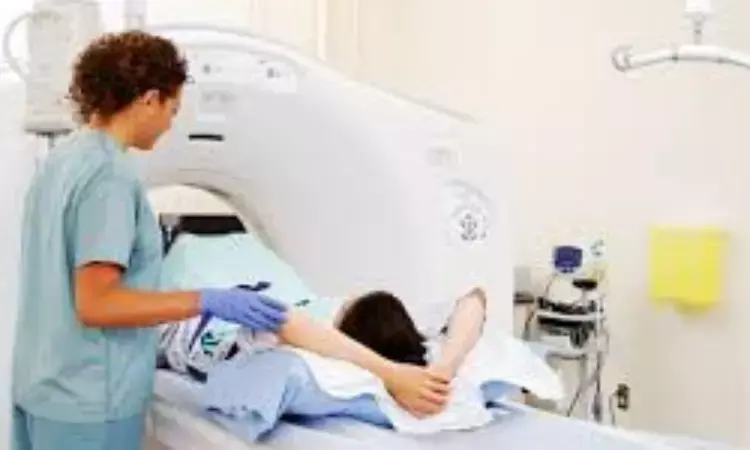- Home
- Medical news & Guidelines
- Anesthesiology
- Cardiology and CTVS
- Critical Care
- Dentistry
- Dermatology
- Diabetes and Endocrinology
- ENT
- Gastroenterology
- Medicine
- Nephrology
- Neurology
- Obstretics-Gynaecology
- Oncology
- Ophthalmology
- Orthopaedics
- Pediatrics-Neonatology
- Psychiatry
- Pulmonology
- Radiology
- Surgery
- Urology
- Laboratory Medicine
- Diet
- Nursing
- Paramedical
- Physiotherapy
- Health news
- Fact Check
- Bone Health Fact Check
- Brain Health Fact Check
- Cancer Related Fact Check
- Child Care Fact Check
- Dental and oral health fact check
- Diabetes and metabolic health fact check
- Diet and Nutrition Fact Check
- Eye and ENT Care Fact Check
- Fitness fact check
- Gut health fact check
- Heart health fact check
- Kidney health fact check
- Medical education fact check
- Men's health fact check
- Respiratory fact check
- Skin and hair care fact check
- Vaccine and Immunization fact check
- Women's health fact check
- AYUSH
- State News
- Andaman and Nicobar Islands
- Andhra Pradesh
- Arunachal Pradesh
- Assam
- Bihar
- Chandigarh
- Chattisgarh
- Dadra and Nagar Haveli
- Daman and Diu
- Delhi
- Goa
- Gujarat
- Haryana
- Himachal Pradesh
- Jammu & Kashmir
- Jharkhand
- Karnataka
- Kerala
- Ladakh
- Lakshadweep
- Madhya Pradesh
- Maharashtra
- Manipur
- Meghalaya
- Mizoram
- Nagaland
- Odisha
- Puducherry
- Punjab
- Rajasthan
- Sikkim
- Tamil Nadu
- Telangana
- Tripura
- Uttar Pradesh
- Uttrakhand
- West Bengal
- Medical Education
- Industry
T-shirt size, a determinant of CT radiation doses?

USA: A recent study in the European Journal of Radiology has described a new approach to denote patient size by T-shirt size. According to the study, adjusting radiation dose for patients on the basis of their T-shirt size could be an easy approach for clinicians for estimating appropriate doses for CT exams.
The approach makes it easier to set appropriate radiation doses for patients undergoing CT exams. "The concept of expressing body size as T-shirt size is simple and intuitive," Madan M. Rehani, Massachusetts General Hospital, Boston, MA, USA, and colleagues wrote in their study.
The study was conducted with the objective to examine the impact of patient size on dose indices and develop size-based reference levels (50th and 75th percentiles) for 20 body CT exams for routine and organ-specific clinical indications.
For the purpose, the researchers classified each acquisition into T-shirt size as XXS, XS, S, M, L, XL, and XXL based on effective diameter estimated from adult body CT. Radiation dose indices for each size and each exam type were correlated.
The researchers reported the following findings:
· About 0.93 million CT exams from 256 CT facilities in the United States were analysed.
· Taking T-shirt size M as a reference, the CTDIvol for other sizes were: XXS (∼60%), XS (∼65%), S (∼75%), L (∼130%), XL (∼165%), XXL (∼210%), or grossly small patients received about 60% of the dose as compared to M sized patients and XXL required doubling the dose.
· Taking ratio of the dose indices of the largest to smallest size, it was evident that SSDE variation was much less (about 50%) than that in CTDIvol, but there was still nearly 40 to 220% variation in SSDE across the range of t-shirt sizes.
· The 50th and 75th percentile values are presented for CTDIvol, SSDE and DLP for each of the 20 CT exams and for each of the seven T-shirt sizes.
To conclude, a novel approach expressing body habitus in terms of T-shirt size simple and intuitive. In addition it also provides a tool to have a perception of differences in dose metrices among patients of different body build.
Reference:
The study titled, "T-shirt size as a classification for body habitus in computed tomography (CT) and development of size-based dose reference levels for different indications," was published in the European Journal of Radiology.
Dr Kamal Kant Kohli-MBBS, DTCD- a chest specialist with more than 30 years of practice and a flair for writing clinical articles, Dr Kamal Kant Kohli joined Medical Dialogues as a Chief Editor of Medical News. Besides writing articles, as an editor, he proofreads and verifies all the medical content published on Medical Dialogues including those coming from journals, studies,medical conferences,guidelines etc. Email: drkohli@medicaldialogues.in. Contact no. 011-43720751


